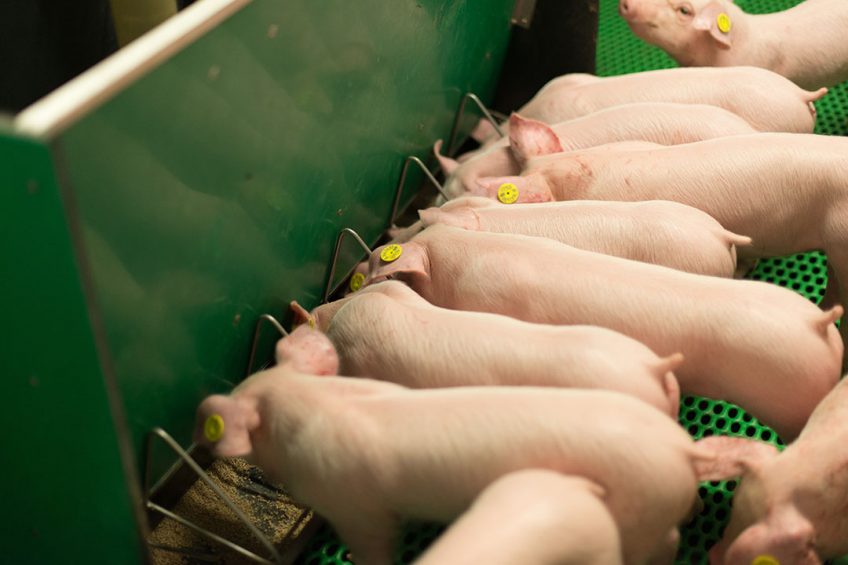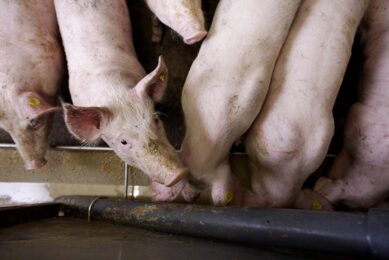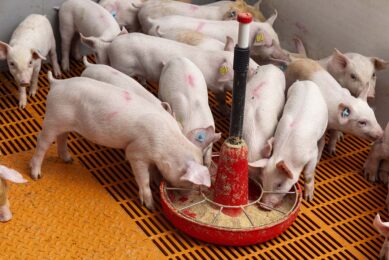All about amino acid digestibility for pigs

In the world of feed formulation for pigs, ‘digestibility’ is often reported on. What exactly does that mean, how is it calculated, why are there several types of digestibility – and why is ‘standardised ileal digestibility’ the one to watch for pig producers?
Digestibility values are essential to know for good diet formulation. After all, only the digestible parts of amino acids are absorbed by the animals and can thus be utilised for protein synthesis. When formulating piglet diets, using accurate digestibility values for different amino acids ensures efficient use and will result in healthy animals, high performance and less environmental burden.
Undoubtedly, one of the most well-known thought leaders in the field of digestibility is Prof Hans Stein, of the Monogastric Nutrition Laboratory at the University of Illinois, United States. For over 20 years, Prof Stein has specialised in researching the digestibility of feed ingredients. His work covers every nutrient and feed ingredient, from energy sources like starch and fats to fibres, and from amino acids to macro- and micro-minerals.
In vitro or in vivo?
With his many years of experience, Prof Stein knows which method will get the most accurate results about the digestibility of all these different ingredients. For energy sources and fibres there are very accurate in vitro laboratory systems. Nevertheless, in vivo methods are still necessary to validate in vitro data. In fact, in order to provide reliable data for amino acids, only the in vivo method is accurate enough. According to Prof Stein, in vitro methods are sometimes used to estimate the digestibility of amino acids but none of them produce accurate data.

Gut Health Special
Managing gut health is very complex with many parameters to consider. This special highlights specie-specific topics, including stress-related intestinal issues in weaning pigs.
Testing amino acid digestibility
In Prof Stein’s view, it is important that almost all amino acids provided with the feed are digested and absorbed in the small intestine of the piglet. Protein and amino acids passing through the small intestine are wasted and lost for live weight gain. That undigested protein is a source for undesired bacteria like E. coli and Salmonella to suddenly grow quickly causing gut tissue damage, leaky gut and diarrhoea.

Pig Health Tool
Find out all there is to know about pig health
Hence, to determine amino acid digestibility, Prof Stein chooses to calculate digestibility values once feed has passed through the small intestine, but before it enters the large intestine. As a result, he uses piglets surgically fitted with a T-cannula at the distal ileum, when the feed is about to enter the colon. Digesta are collected from the ileum cannula. Protein and amino acid content both in feed as well as in the ileal digesta are then analysed and compared, providing the most accurate figure for true protein and amino acid digestibility for animal or plant protein ingredients.
Also interesting: Overcoming Salmonella: Do vaccination or probiotics help?
In research, often a distinction is made between 3 different types of digestibility, which will be briefly discussed below. What matters is that standardised ileal digestibility is important for dietary formulation; the others are steps in the calculation process.
1. Apparent ileal digestibility (AID)
AID is calculated by deducting the total ileal outflow from the dietary amino acid intake. In simple words: what goes in, minus what comes out. The value in itself mostly functions as a starting point for further research. As the name suggests, ‘apparent’ ileal digestibility appears to represent the fraction of amino acids that has been digested, but there are a few other things to consider.
2. True ileal digestibility (TID)
The fact is that total ileal outflow consists not only of non-digested amino acids. Another component is what is known as ‘endogenous losses’, or the total of proteins that are derived from the animal itself and are released into the gastrointestinal tract during digestion. These include mostly digestion enzymes, bile, mucus and dead intestinal epithelial cells. To calculate the TID, the AID is corrected for these endogenous losses.
3. Standardised ileal digestibility (SID)
Endogenous losses can also be subdivided into two types: ‘basal losses’, or losses occurring anyway; and ‘specific losses’, those that are dependent on feed ingredient composition. Elements such as anti-nutritional factors and dietary fibre lower the digestibility, causing the endogenous losses to be higher. When AID is only corrected for the basal losses, the SID is what is left.
Once the correct in vivo digestibility values for proteins and amino acids have been established, only then can feed companies and pig farmers formulate their diets more accurately. Providing a well-balanced feed will ensure maximum growth, most efficient feed conversion and a healthy pig.
After all, any protein and amino acids that are not digested and absorbed in the small intestine are lost for the pig and contribute to more nitrogen excretion.
Testing plant-based protein concentratesThe Monogastric Nutrition Laboratory receives numerous applications for in vivo testing from all over the world. In 2018, Prof Stein and colleagues at the lab performed a trial comparing Peruvian fishmeal with the plant-based protein concentrates JPC56 and FMRΩ3 (Joosten Young Animal Nutrition). The in vivo experiment showed clear results with very high protein and amino acid digestibility for both concentrates. The digestibility of crude proteins in JPC56 was 99%, the digestibility in FMRΩ3 was 96.3%. The results of this newest generation of plant-based protein concentrates show that they can replace other protein sources in piglet diets such as fishmeal and other animal proteins. Together with the low nitrogen excretion of high digestible product, the outcomes of the research mean that these plant-based protein concentrates are important for the feed and pig industry. |
A full account of the results of this study was published in Pig Progress 35.04 (2019).











